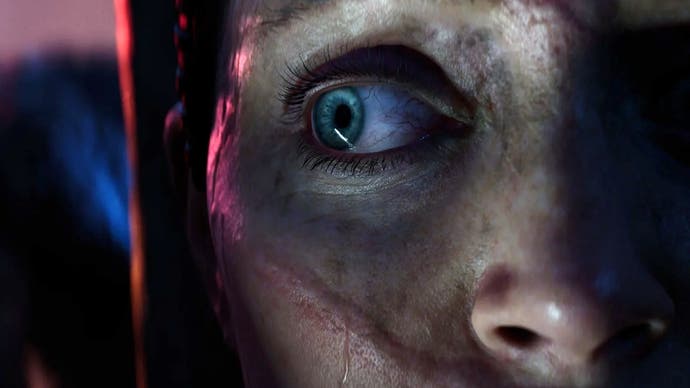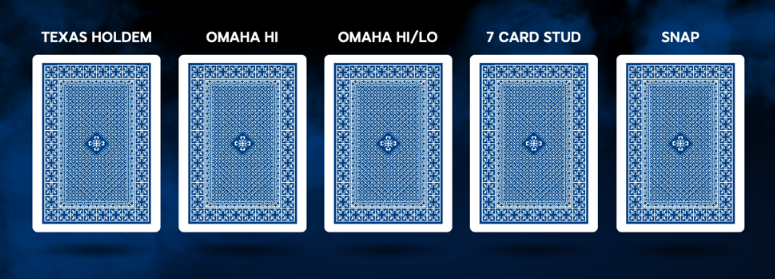Senua’s Saga: Hellblade 2 is one of the most anticipated games of the next generation, and for good reason. The original game, Hellblade: Senua’s Sacrifice, was praised for its stunning visuals and innovative gameplay mechanics. With the power of next-gen consoles, developer Ninja Theory is taking things to the next level.
The game’s graphics have been a major talking point since its announcement, and for good reason. Senua’s Saga: Hellblade 2 is pushing the limits of what’s possible with current technology, and it shows. From the realistic lighting to the intricate details on character models, every aspect of the game’s visuals has been meticulously crafted to create an immersive and realistic experience.
Visual Innovations in Senua’s Saga: Hellblade 2
Senua’s Saga: Hellblade 2 is a highly anticipated action-adventure game developed by Ninja Theory and published by Xbox Game Studios. It will be released on May 21st, 2024, and is expected to redefine the next-gen’s graphics ceiling.
Senua’s Saga: Hellblade 2 boasts some incredible visual innovations that set it apart from other games. The game features stunning graphics that push the limits of what is possible on modern hardware. The developers have used advanced lighting techniques, high-resolution textures, and realistic character models to create a truly immersive experience.
One of the most impressive visual innovations in Senua’s Saga: Hellblade 2 is ray tracing. This technology allows for more realistic lighting and shadows, making the game world feel more alive and dynamic. The game also features advanced particle effects, which add to the overall atmosphere and immersion.
Another visual innovation in Senua’s Saga: Hellblade 2 is the attention to detail in character models. The game features incredibly realistic facial animations and expressions, which help to convey emotion and add to the overall immersion. The developers have also paid close attention to the movement and behaviour of characters, making them feel more lifelike and believable.
Technical Breakthroughs Driving Graphics Enhancement
The gaming industry has made great strides in graphics enhancement, with each year bringing new technology and advancements. Senua’s Saga: Hellblade 2 is a prime example of how technical breakthroughs drive graphics enhancement to a new level.
Ray tracing technology is one of the most significant technical breakthroughs in graphics enhancement. Ray tracing allows for more accurate and realistic lighting, shadows, and reflections in games. Senua’s Saga: Hellblade 2 uses ray tracing to create a more immersive and realistic environment for players.
Another technical breakthrough is the use of high-resolution textures. Senua’s Saga: Hellblade 2 features incredibly detailed textures that make every surface and object in the game look more realistic. This allows for greater immersion and a more lifelike experience for the player.
In addition to ray tracing and high-resolution textures, Senua’s Saga: Hellblade 2 utilises advanced animation techniques. The game features motion capture technology that captures the movements and expressions of real actors, creating more realistic characters.
Finally, Senua’s Saga: Hellblade 2 uses the latest hardware advancements, such as the powerful graphics processing units (GPUs) in modern gaming consoles and PCs. The game is optimised to fully utilise these powerful GPUs, allowing for smoother gameplay and more detailed graphics.
Gameplay Experience and Realism
Senua’s Saga: Hellblade 2 truly redefines the gaming experience by offering a level of realism unparalleled in the industry. The game’s graphics are breathtaking, and the attention to detail is remarkable. The game’s developers have gone to great lengths to ensure that every aspect of the game is as realistic as possible.
One of the most impressive aspects of the game is the combat system. The combat in Senua’s Saga: Hellblade 2 is visceral and intense, with each blow feeling like it has weight and impact. The game’s combat system is designed to be challenging but not punishing, and it rewards players who take the time to learn the mechanics.
The game’s sound design is also worth mentioning. The game’s developers have used binaural audio to create a truly immersive experience. The game’s sound is so realistic that players may look over their shoulders to see if someone is there.
Online Casino Game Developers Following Suit
As the gaming industry continues pushing the boundaries of graphics and technology, online casino game developers are following suit. The evolution of casino games has been significant over the years, and it is clear that developers are committed to providing players with a high-quality gaming experience. Websites like Jeffbet.com offer players to try the latest games from the top developers in the industry.
One of the most notable advancements in online casino games is using advanced graphics and animations. Developers are now utilising the latest technologies to create visually stunning, immersive, and engaging games. These games feature high-resolution graphics, detailed animations, and realistic sound effects that transport players to a new world.
In addition to advanced graphics, developers incorporate innovative features that enhance gameplay. These features include bonus rounds, free spins, and multipliers, which make the games more exciting and increase the chances of winning big.
Moreover, casino game developers are also adopting new technologies, such as virtual reality and augmented reality, to create even more immersive gaming experiences. These technologies allow players to interact with the game world in new and exciting ways, making the gaming experience even more engaging.
Artistic Direction and Visual Storytelling
Senua’s Saga: Hellblade 2 pushes the boundaries of what is possible with modern graphics technology. However, the game’s technical aspects are not the only ones that make it stand out. The game’s artistic direction and visual storytelling are equally impressive.
One of the most striking aspects of the game’s visuals is photogrammetry. According to Dan Attwell, Environmental Art Director of Hellblade 2, there are over 370 pieces of photogrammetry in the sequel, compared to just one in the first Hellblade. This technique involves taking photographs of real-world objects and using them to create highly detailed 3D models. The result is an incredibly lifelike world that feels grounded in reality.
Another aspect of the game’s artistic direction that stands out is lighting. The game features dynamic lighting that reacts to the environment and the player’s actions, creating a sense of immersion unmatched by other games.
The game’s visual storytelling is also noteworthy. The protagonist, Senua, suffers from a severe mental illness, and the game’s visuals represent her experiences. The game features surreal and hallucinatory imagery that reflects Senua’s state of mind. This creates a unique and immersive storytelling experience unlike anything else in gaming.
Performance Capture and Character Realism
Senua’s Saga: Hellblade 2 sets a new standard for character realism in video games. Ninja Theory utilised performance capture in the first Hellblade for its cinematic moments. Still, in Hellblade 2, almost every in-game movement is performed by real-world actors and scanned in to ensure the most realistic human experience possible in-game.
This meticulous approach to motion capture and animation has resulted in characters that move, emote, and react in an almost indistinguishable way from real-life actors. The level of detail in the facial expressions, body movements, and even subtle gestures is truly impressive.
According to Studio Head Dom Matthews, capture for the combat sequences alone took almost 70 full days to complete. This shows the dedication and effort put into making the characters in the game as realistic as possible.
The attention to detail extends beyond just the motion capture. The character models are incredibly detailed, with realistic skin textures, hair, and clothing. This level of detail helps further immerse the player in the game’s world and makes the characters feel like real people rather than digital avatars.
Environmental Detail and World Building
Senua’s Saga: Hellblade 2 redefines the next-gen’s graphics ceiling. One of the most impressive aspects of the game is its environmental detail and world-building. The team behind the game has put much effort into creating a real and immersive world.
The use of photogrammetry is particularly noteworthy. This technique involves scanning real-world objects and environments and using them to create 3D models in the game. According to Dan Attwell, Environmental Art Director of Hellblade 2, there are over 370 pieces of photogrammetry in the sequel, compared to just one in the first Hellblade. This attention to detail is evident in the game’s environments, which look incredibly realistic.
The world-building in Hellblade 2 is also impressive. The game takes place in Iceland, and the team has done an excellent job capturing the country’s rugged and beautiful landscape. The game’s environments are full of small details that help bring the world to life, such as snowdrifts, icicles, and rocky outcroppings.
In addition to the environmental detail, the game’s sound design aids its world-building. The game’s audio team has recorded sounds from Iceland, such as the wind blowing across glaciers and the sound of ice cracking. These sounds help create a sense of immersion and make the player feel like they are really in the game’s world.
Lighting and Atmospheric Effects
One of the most impressive aspects of Senua’s Saga: Hellblade 2 is its lighting and atmospheric effects. The game’s developers have paid great attention to detail in this regard, and it shows in the final product.
The lighting in Hellblade 2 is some of the most realistic and dynamic in a video game. The game features various lighting effects, from a torch’s warm glow to the sun’s harsh glare. The lighting is also dynamic, changing in real time as the player moves through the game world, creating a more immersive and believable experience for the player.
Another impressive aspect of Hellblade 2’s lighting is its use of shadows. The game features realistic shadows cast by objects in the world. This adds depth and realism to the game’s environments and helps create a more immersive experience for the player.
The game’s atmospheric effects are also noteworthy. Hellblade has two weather effects: rain, snow, and fog. These effects are used to great effect in the game, creating a sense of atmosphere and mood unmatched by most other games.
Comparative Analysis with Previous Generation Graphics
Senua’s Saga: Hellblade 2 is a highly anticipated game that promises to redefine next-generation consoles’ graphics ceiling. To understand the significance of this claim, it is important to compare the game’s graphics with those of its predecessor and other games from the previous generation.
The original Hellblade: Senua’s Sacrifice was released in 2017 and was praised for its stunning visuals and immersive gameplay. The game’s graphics were powered by Unreal Engine 4 and featured highly detailed environments and characters. However, when compared to the graphics of Senua’s Saga: Hellblade 2, it becomes clear that the capabilities could have been improved by a generation of consoles limited to the original game.
Senua’s Saga: Hellblade 2, on the other hand, is being developed for the Xbox Series X|S and PC, which can deliver much higher graphics fidelity than the previous generation of consoles. The game’s graphics are powered by Unreal Engine 5, which promises unprecedented visual fidelity and realism.
Regarding graphical settings, the PC version of Senua’s Saga: Hellblade 2 is largely identical to the Xbox Series X version. However, the Xbox Series S version has received cutbacks regarding texture quality and shadow. On the Xbox Series X, the game features only a single graphics mode that runs at a resolution of 4K with a target frame rate of 30fps. There’s no performance mode to speak of.
Future Implications for Game Development
Senua’s Saga: Hellblade 2 has set a new benchmark for graphics and visual fidelity in video games. The game’s use of advanced motion capture technology, high-resolution textures, and realistic lighting has pushed the boundaries of what is possible in game development, which has significant implications for the future of game development.
One of the most significant implications of Hellblade 2’s graphics is that it will force other developers to raise their standards and invest in more advanced technology to keep up. The game’s visuals are so impressive that players expect the same quality in other games, especially those released on next-gen consoles.
Another implication is that game developers will need to focus more on storytelling and character development to match the level of immersion that Hellblade 2 offers. The game’s protagonist, Senua, is a complex character with a rich backstory, and the game’s story is unique and engaging. Other developers must invest more in character development and storytelling to keep players engaged and immersed in their games.
Finally, Hellblade 2’s graphics will also have implications for the hardware requirements of future games. Games will require more powerful hardware to run smoothly as they become more graphically advanced. This means that players will need to invest in more powerful hardware to play the latest games, which could have implications for the affordability and accessibility of gaming.
Conclusion
Senua’s Saga: Hellblade 2 pushes the boundaries of what is possible in terms of graphics and visual fidelity. Its cutting-edge technology and attention to detail set a new standard for what gamers can expect from next-generation titles.
One of the most impressive aspects of Hellblade 2 is its use of photorealistic graphics. The game’s environments are incredibly detailed, with textures and lighting that are so realistic that they almost look like photographs. This level of realism is made possible by the game’s use of advanced rendering techniques, such as ray tracing and global illumination.
Another key feature of Hellblade 2’s graphics is its use of motion capture technology. Thanks to motion capture actors and advanced animation techniques, the game’s characters move and behave in ways that are incredibly lifelike. This realism level helps immerse players in the game’s world and makes the characters feel more human and relatable.
Overall, Senua’s Saga: Hellblade 2 is sure to impress both gamers and industry professionals alike. Its use of cutting-edge technology and attention to detail set a new standard for what is possible in terms of graphics and visual fidelity, and it is sure to be remembered as a defining moment in the evolution of video game graphics.











![[Rumor] Capcom is reportedly working on a new Dead Rising](https://vgleaks.com/wp-content/uploads/2025/12/capcom-logo-150x150.jpg)

